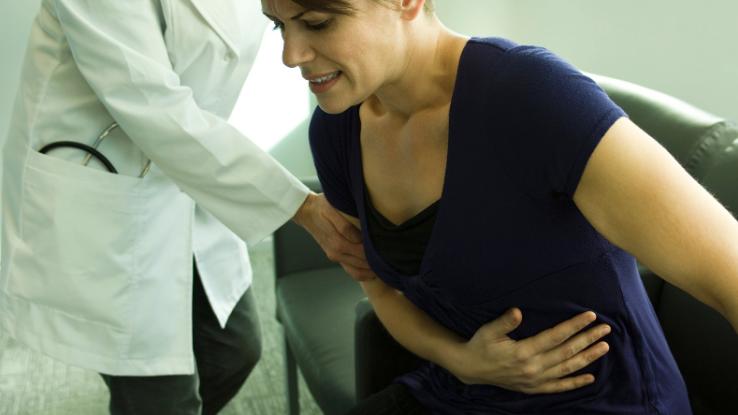
Abdominal pain is characterized by cramping or discomfort in the abdomen (or stomach) area. It is also referred to as belly ache, tummy ache, or stomach ache. It can occur anywhere in the abdomen, including right below the chest; in the center; over to one or other side; or down toward the groin. The discomfort can range from mild to severe, and can be acute (recent onset) or chronic (long term).
Most of the time, abdominal pain does not signify any immediate life-threatening situations. However, if the aches are recurring and accompanied by other signs and symptoms, such as bloody stool, vomit, or high fever, be sure to seek immediate medical care as these could be signs of a more serious condition.
What Are the Most Common Causes of Abdominal Pain?
The presence of abdominal pain is often an indicator that something is going amiss in the belly area. There are numerous causes for abdominal pain, ranging from simple indigestion to life-threatening conditions. Since many organs, including the liver, pancreas, gallbladder and kidneys, are all in the abdominal region, pain may be an indicator of something wrong with those organs rather than the stomach and intestines themselves.

Most commonly, abdominal pain is caused by:
- Constipation
- Indigestion
- Trapped wind
- Diarrhoea
- Food poisoning
- Inflammation of the gallbladder (cholecystitis)
- Other less common causes include:
- Gallbladder stones
- Inflammation of the appendix (appendicitis)
- Inflammation of the pancreas (pancreatitis)
- Food allergies, such as lactose intolerance
- Inflammation of the peritoneal lining of the stomach
- Inflammation of abdominal lymph nodes
- Irritable bowel syndrome
- Kidney stones
- Physical injury to the abdominal area
- Stomach ulcer
- Tumor or cancer
- Abdominal aortic aneurysm (weakening of the main artery in the abdomen)
- Lack of blood supply to the gut area (ischemic bowel)
- Pulled or torn abdominal muscle
- Hernias around the abdominal region
- Bowel obstruction
Since the chest and pelvic areas are within close proximity of the abdomen, conditions in those areas can also be interpreted as abdominal cramping. These conditions include:
- Urinary tract infection (for both men and women)
- Menstrual cramping
- Endometriosis
- Ectopic pregnancy (where a pregnancy occurs outside of the uterus)
- Ovarian cysts
- Gastroesophageal reflux disease (GERD)
- Pelvic inflammatory disease
- Heart attack
- Inflammation of the lining of the lungs (pleurisy)
- Heartburn
- Pneumonia
- Non-Hodgkin’s Lymphoma
- Lung collapse (pneumothorax)
- Liver inflammation (hepatitis)
When Should You See a Doctor?
It is important to seek immediate medical attention if you have any of the following:

- Pressure, heaviness, or pain in the chest area
- The pain came on very suddenly, and is severe
- If you have been involved in significant physical trauma, such as in a car accident
- Pain that stops you from moving around
- Vomiting blood or if your vomit looks like coffee grounds
- Bloody stool, or stool that is black and tar-like
- You are feeling breathless at rest
- Peeing less often than usual, or unable to pass urine at all
- Suspect that you are or may be pregnant
- If you are unable to poo or pass wind
- You have an underlying health condition such as cancer
You should see your primary care practitioner if you have any of the following, as the pain may indicate a serious underlying problem:
- The pain lasts for more than a few days
- The pain is getting worse
- Fever
- Abnormal vaginal bleeding or discharge
- A change in your normal toilet habits
- Unintentional weight loss
- Loss of appetite
- Frequent or troublesome heartburn
- Painful or heavy menstrual periods
- Pain or discomfort on passing urine
- Yellowing of the skin or eyes
- The pain is made worse by eating
Home Remedies and Other Ways to Prevent Abdominal Pain
For mild abdominal cramps, there are a few home remedies that can help alleviate stomach pain. Depending on your symptoms, attempting some of the following may help:

- If you are suspecting excessive gas in the GI tract, or indigestion, it may help to lay face down on the floor with a pillow propped under the stomach. It can help the gas move along and provide relief.
- Avoid eating for a few hours.
- If you are experiencing symptoms of heartburn or acid reflux, taking an antacid can provide relief.
- Avoid anti-inflammatory agents, such as NSAIDS, aspirin, or ibuprofen unless directed by a physician. They may make stomach cramps worse.
- Increase your fluid intake to aid with digestion.
- Gentle exercise such as walking
- For prevention of future abdominal pains, you can:
- Avoid greasy, fried, fatty, acidic, spicy, and harsh foods in general.
- Eat smaller meals more frequently.
- Be sure to chew properly and eat slowly.
- Exercise regularly.
- Eat plenty of fruits and vegetables and increase fiber intake.
Resource Links:
- National Library of Medicine: Medline Plus (2021). Abdominal Pain.
- NHS (2020). Stomach Ache.
- NHS Inform (2019). Self-help guide: Abdominal Pain.
- Mayo Clinic (2019). Abdominal Pain.
- American College of Gastroenterology (2018). Abdominal Pain.
- Elsevier Point of Care. Abdominal pain in adults (2021).
- BMJ Best Practice (2020). Assessment of acute abdomen.
- American Academy of Family Physicians (2021). Abdominal Pain (Stomach Pain), Short-term.
- Royal College of Emergency Medicine (2017). Abdominal Pain without Shock.





